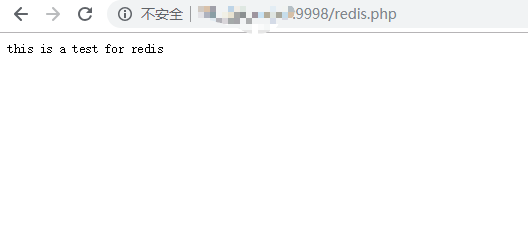您好,登錄后才能下訂單哦!
您好,登錄后才能下訂單哦!
這篇文章給大家分享的是有關docker怎樣搭建php+nginx+swoole+mysql+redis環境的內容。小編覺得挺實用的,因此分享給大家做個參考,一起跟隨小編過來看看吧。
軟件:docker-ce version 18.09.3, docker-compose version 1.23.2
一.創建帶有swoole-redis-pdo_mysql-gd擴展的docker image
1.創建dockerfile文件
vim dockerfile
2.在dockerfile文件寫入
From php:7.1-fpm RUN apt-get update && apt-get install -y \ libfreetype6-dev \ libjpeg62-turbo-dev \ libpng-dev \ && docker-php-ext-install -j$(nproc) iconv \ && docker-php-ext-configure gd --with-freetype-dir=/usr/include/ --with-jpeg-dir=/usr/include/ \ && docker-php-ext-install -j$(nproc) gd \ && docker-php-ext-configure pdo_mysql \ && docker-php-ext-install pdo_mysql \ && pecl install redis-4.3.0 \ && pecl install swoole \ && docker-php-ext-enable redis swoole
3.創建自定義的php鏡像,主要不要漏了最后的 '.',是指定當前目錄構建鏡像
docker build -t myphp4 .
運行指令,由于網絡問題等,需要等比較長的時間,成功后會出現類似下面的代碼
...
Build process completed successfully
Installing '/usr/local/include/php/ext/swoole/config.h'
Installing '/usr/local/lib/php/extensions/no-debug-non-zts-20160303/swoole.so'
install ok: channel://pecl.php.net/swoole-4.3.1
configuration option "php_ini" is not set to php.ini location
You should add "extension=swoole.so" to php.ini
Removing intermediate container ad1420f7554f
---> 2f2f332d73ce
Successfully built 2f2f332d73ce
Successfully tagged myphp4:latest
至此docker 的自定義myphp4 image創建成功!
二.創建docker-compose.yml文件
mkdir pnsmr cd pnsmr vim docker-compose.yml
寫入下面代碼
version: '3.0' services: nginx: image: "nginx:latest" ports: - "10000:80" volumes: - /var/www/html:/usr/share/nginx/html php-fpm: image: "myphp4" volumes: - /var/www/html:/usr/share/nginx/html mysql: image: "mysql:latest" redis: image: "redis:4.0"
運行指令
docker-compose up -d
成功可以看到
WARNING: The Docker Engine you're using is running in swarm mode.
Compose does not use swarm mode to deploy services to multiple nodes in a swarm. All containers will be scheduled on the current node.
To deploy your application across the swarm, use `docker stack deploy`.
Creating network "pnsmr_default" with the default driver
Creating pnsmr_php-fpm_1 ... done
Creating pnsmr_redis_1 ... done
Creating pnsmr_mysql_1 ... done
Creating pnsmr_nginx_1 ... done
至此,已開啟nginx mysql redis php 服務
三.修改各服務配置文件
1.瀏覽器輸入 127.0.0.1:9998 #此處應輸入你的服務器ip地址,可以看到下圖

2.接下來要修改容器里nginx的配置文件,先使用指令查看各容器的docker IP地址
docker inspect -f '{{.Name}} - {{range .NetworkSettings.Networks}}{{.IPAddress}}{{end}}' $(docker ps -aq)此指令可以查看所有用docker-compose 開啟的容器的ip,結果類似下圖,可以用對應的ip地址進行內部通訊

3.復制nginx容器的配置文件出來,并修改替換,使nginx能解析php
docker cp pnsmr_nginx_1:/etc/nginx/conf.d/default.conf nginx.conf vim nginx.conf
修改為下列代碼
server {
listen 80;
server_name localhost;
#charset koi8-r;
#access_log /var/log/nginx/host.access.log main;
location / {
root /usr/share/nginx/html;
index index.html index.htm;
}
#error_page 404 /404.html;
# redirect server error pages to the static page /50x.html
#
error_page 500 502 503 504 /50x.html;
location = /50x.html {
root /usr/share/nginx/html;
}
# proxy the PHP scripts to Apache listening on 127.0.0.1:80
#
#location ~ \.php$ {
# proxy_pass http://127.0.0.1;
#}
# pass the PHP scripts to FastCGI server listening on 127.0.0.1:9000
#
location ~ \.php$ {
root html;
fastcgi_pass 172.24.0.3:9000;#此處需要填寫你的php容器的docker內部通訊ip
fastcgi_index index.php;
fastcgi_param SCRIPT_FILENAME /usr/share/nginx/html/$fastcgi_script_name;
include fastcgi_params;
}
# deny access to .htaccess files, if Apache's document root
# concurs with nginx's one
#
#location ~ /\.ht {
# deny all;
#}
}
docker cp nginx.conf pnsmr_nginx_1:/etc/nginx/conf.d/default.conf #將修改好的配置文件拷貝到容器里
docker container stop pnsmr_nginx_1
docker container start pnsmr_nginx_1 #重啟nginx容器使配置文件生效
vim /var/www/html/index.php #在服務器本地目錄新建 index.php 文件,輸入<?php phpinfo(); 并保存
vim /var/www/html/index.html #在服務器本地目錄新建 index.html 文件,輸出helloworld訪問127.0.0.1:9998, html文件解析正常

訪問127.0.0.1:9998/index.php,php文件解析正常

4.測試mysql,redis是否生效
vim /var/www/html/redis.php #用于測試redis是否配置成功
<?php
$redis = new Redis();
$redis->connect("172.24.0.4",6379);
$redis->set('test','this is a test for redis');
echo $redis->get('test');訪問127.0.0.1:9998/redis.php,redis已生效

進入mysql容器
docker exec -it pnsmr_mysql_1 bash
進入mysql并更改root用戶密碼

創建測試文件
vim /var/www/html/mysql.php
<?php
$pdo = new PDO('mysql:host=172.24.0.2;dbname=mysql;port=3306','root','root123');
var_dump($pdo);訪問127.0.0.1:9998/mysql.php,mysql已生效

四.總結
雖然環境是配置成功了,并可以用docker-compose up 指令一鍵生成,但是還要改各容器的配置文件,仍然不夠方便,需要優化;另外docker的集群,堆棧功能也沒用上,后面再繼續學習.
感謝各位的閱讀!關于“docker怎樣搭建php+nginx+swoole+mysql+redis環境”這篇文章就分享到這里了,希望以上內容可以對大家有一定的幫助,讓大家可以學到更多知識,如果覺得文章不錯,可以把它分享出去讓更多的人看到吧!
免責聲明:本站發布的內容(圖片、視頻和文字)以原創、轉載和分享為主,文章觀點不代表本網站立場,如果涉及侵權請聯系站長郵箱:is@yisu.com進行舉報,并提供相關證據,一經查實,將立刻刪除涉嫌侵權內容。